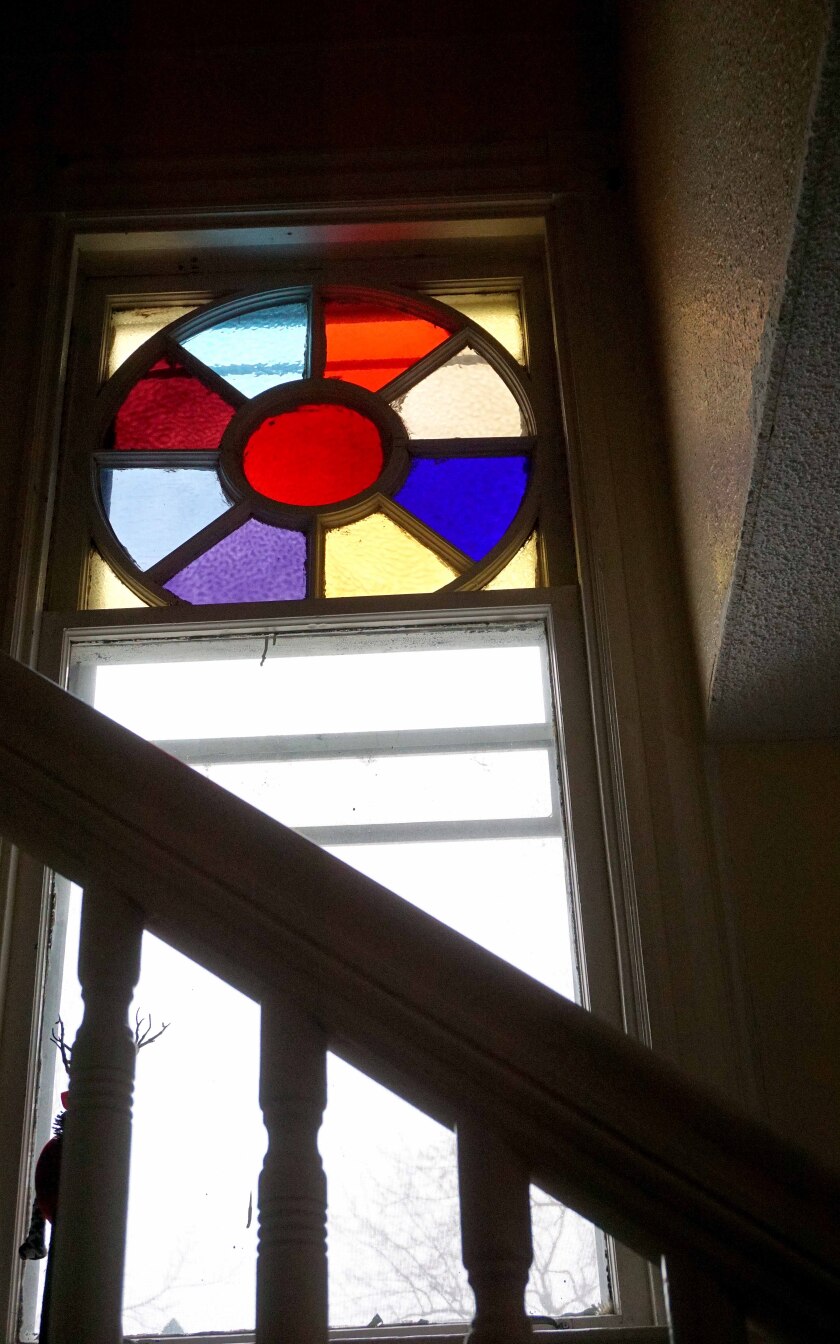The once single-family residence was converted to a multi-family rental, as were many large homes when the economic complexion of the neighborhood changed.
This article was written by Peter Passi and published on March 13, 2023.

DULUTH — A Central Hillside residence will likely be designated a local heritage preservation landmark by the Duluth City Council on Monday evening, in recognition of the structure’s architectural value and the story it tells of a neighborhood’s evolution.
“It’s certainly uncommon,” said Steven Robertson, manager of Duluth’s planning and development department, reflecting on the efforts of the property’s owners to seek landmark status for the residence.
But he applauds the dedication those owners have demonstrated in putting together a detailed and well-argued nomination.
“They’re doing this presumably not just for themselves but for the neighborhood. They want the neighborhood to have this kind of element not just now but into the future,” Robertson said.
The home at 230 E. Fourth St. sits near a parking ramp that serves Essentia Health’s medical campus to the east. The house was built in 1886 for the family of Charles H. Arthur, one of the affluent founders of a short-lived grain commission firm called Arthur, Waters & Co., at a time when Duluth was ascending in wealth and population.
The home was part of an upscale neighborhood then known as Ashtabula Heights, in recognition of some of its notable residents of means who hailed from Ashtabula, Ohio, including former Duluth Mayor Josiah Ensign.
But the construction of a streetcar line in the 1880s would soon prompt many of the neighborhood’s well-heeled residents to move farther east.
After a brief stay in their new Queen Anne-style home, the Arthurs picked up stakes as well.

In 1912, the home was converted to a multi-family rental property, which it continues to operate as today.
Lauren Anderson, director of New History, a research firm hired by the owners, said the Arthur residence embodies the narrative history of a neighborhood shifting to serve working-class people in the subdivided homes of the wealthy.
She compiled a list of some of the people who called the structure home through the years, including a laundress, teacher, telephone operator, nurse, bartender, mechanical foreman, newspaperman, clerks, salesmen, a cabinetmaker and a number of widows.

The property currently is configured as a four-plex and is owned by Zak Skelton and Cameron Carlson, doing business as Aspenglow Properties of St. George, Utah. They purchased the building long-distance.
Skelton said he was drawn to the historic character of the home, and his business partner, Carlson, had been looking for property in Duluth in anticipation that it would serve as an attractive destination for people seeking refuge from the growing effects of climate change.
Skelton and Carlson purchased the property in February of last year.
“We were really impressed with how many historic buildings you have there, especially the Victorians and spanning other eras. It was really cool to see how many old buildings there were and how many were taken care of,” Skelton said.

There are no immediate projects in the works, and if the property is designated a local landmark Monday, Robertson said, “They will need to come up with a preservation plan that says: These are the elements we think are important to the historic character of the property and this is how we will preserve it.”
Stevenson said the plan can be selective and need not call out every original element of the home.
“We’re definitely interested in trying to do what we can to restore the historic character of the building and do some improvements,” Skelton said, noting that replacing downsized windows and asbestos siding that had been installed with materials more consistent with those used in the original construction of the home are among the projects he hopes to undertake.
But it will take time.
Seeking landmark designation for the property has been more work than Skelton initially imagined but said he had no regrets.
“The history of who rented it has been really cool to learn about with Lauren, too. It’s been a home to blue-collar residents since it was converted. So, we see this as an opportunity to preserve that blue-collar history, which personally I don’t find happens very often. Usually buildings that are preserved as historic landmarks end up being places that belonged to old wealthy white guys,” Skelton said.
Stevenson noted that a number of homes in the neighborhood have been torn down to make way for parking to meet the needs of Essentia and St. Luke’s, local health providers that are both now working to consolidate their operations and reduce their footprints with new ramps.
“One of the advantages we see in this application is, while we don’t think the Essentia campus will grow out any more, who really knows? But both the Essentia and St. Luke’s campuses have absorbed and demolished many homes, and having this one designated as a historic property might serve as a nice bulwark to make sure there’s no further expansion into the neighborhood, at least to the southwest,” he said.
Stevenson said it’s relatively rare for the owner of a residential property to seek local landmark status.
“We normally get about one of these designations every year or so. But I think, if the city had more tools to help homeowners, we might get more,” he said, suggesting that perhaps low-interest loans could spur more efforts to preserve and restore historic structures.
Duluth now has 29 places designated as local historic preservation landmarks, and the Arthur House could make that 30. The city also has 43 properties that have been placed on the National Register of Historic Places. The national designation requires even more rigorous review.
Stevenson said he believes the home at 230 E. Fourth St. is worthy of recognition.
“Just because of the size of the structure, how unique it is and how visible it is, it provides a huge contrast from the parking ramp 50 feet away. So, it’s essentially like a gateway saying: Welcome to the neighborhood, after you leave Essentia,” he said.
